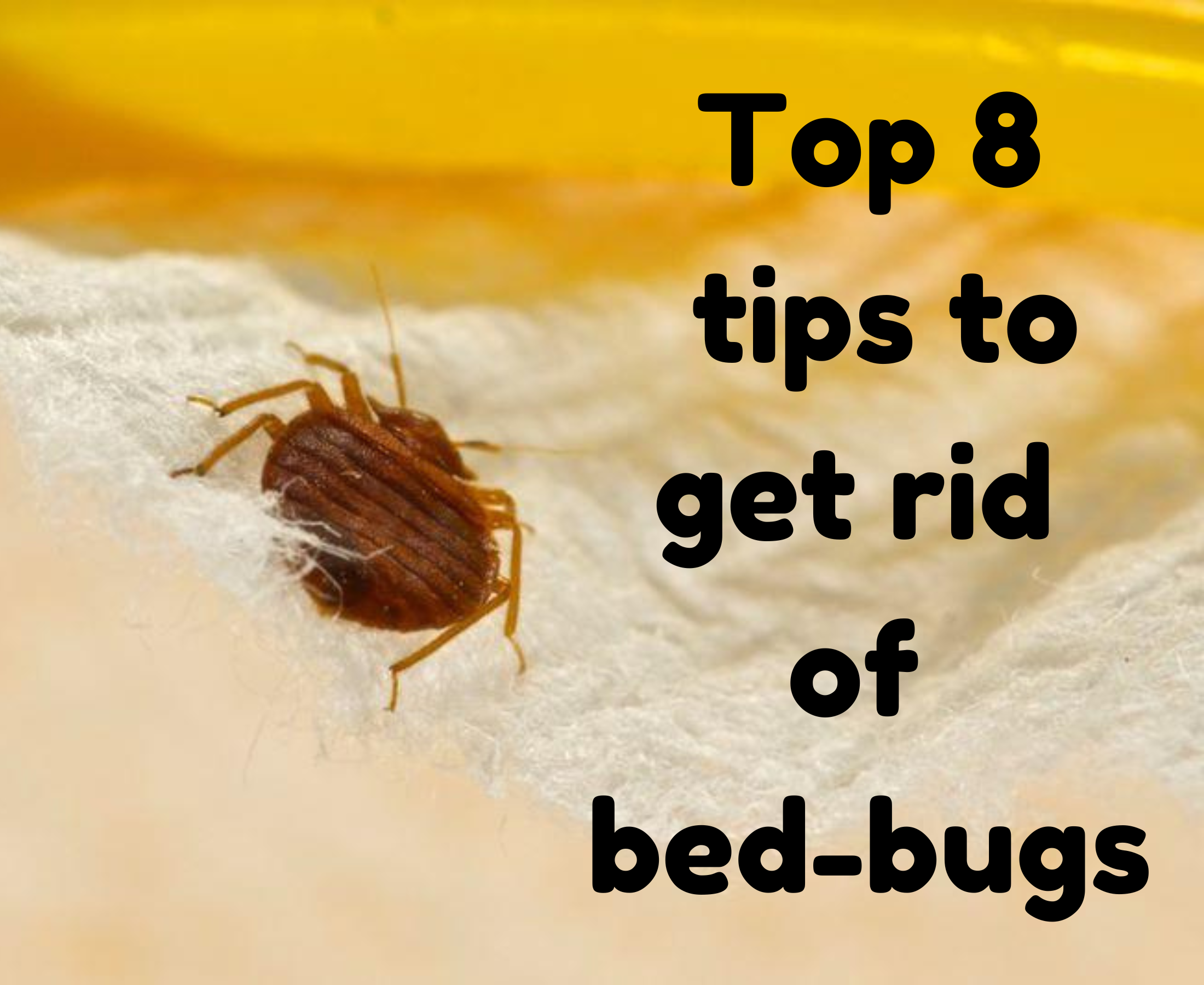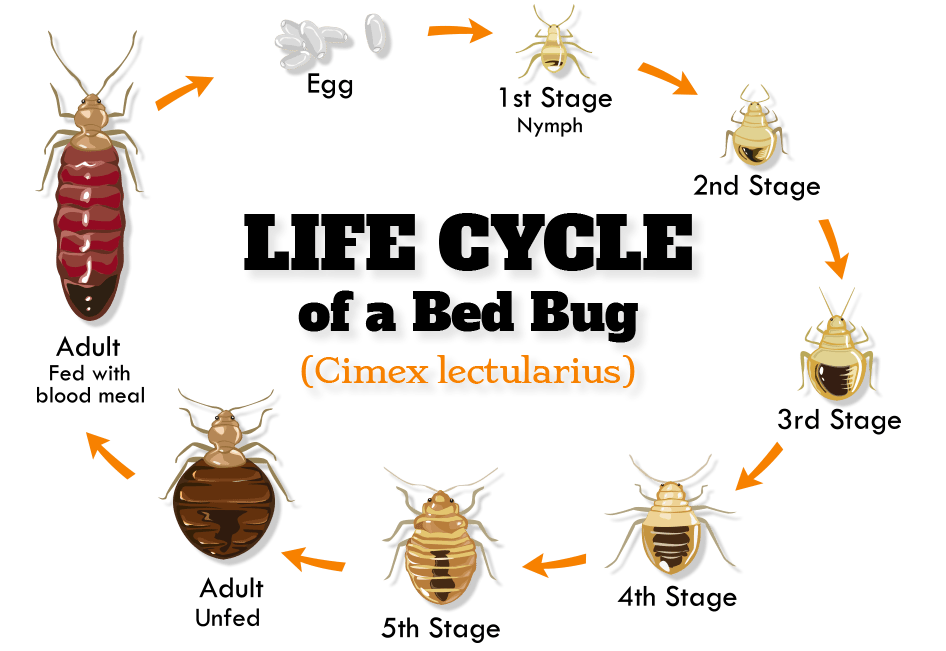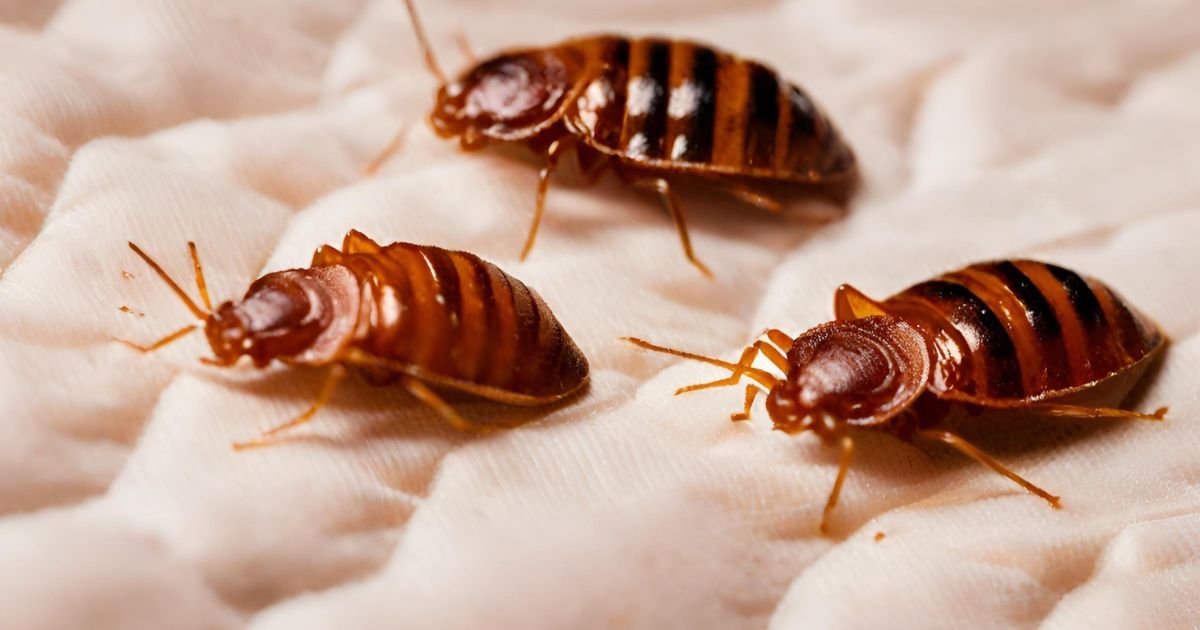To permanently eliminate bed bugs, use a combination of chemical treatments and heat treatment. Professional extermination ensures the most effective and lasting results.
Dealing with a bed bug infestation can be a significant challenge. These persistent pests require more than just a simple spray or DIY solution; they demand a comprehensive approach blending scientific methods and thoroughness. This short guide aims to arm you with critical information to tackle the problem head-on.
Entomologists recommend integrating professional pest control services with preventative measures to achieve a bed bug-free environment. Engaging experienced exterminators who use EPA-approved pesticides ensures the safe and effective removal of these insects. Additionally, maintaining a clean and clutter-free home environment is vital for supporting the extermination process and preventing future infestations. Embracing this multi-faceted strategy can help you say goodbye to bed bugs for good.
The Bed Bug Menace
Imagine waking up to tiny, itchy bites every morning. That’s the reality for countless households grappling with bed bugs. These tiny terrors hide in crevices only to emerge at night, making them unwanted bedtime companions. Their resilience and stealthy nature turn home sanctuaries into battlegrounds. Effective control requires understanding bed bugs’ characteristics and debunking common myths to strategize their permanent removal.
Traits That Make Bed Bugs Formidable
- Size: Bed bugs are small, making them hard to spot.
- Night Activity: They feed at night, staying unnoticed.
- Rapid Breeding: One female can lay 200-500 eggs in her lifetime.
- Longevity: Bed bugs can survive months without feeding.
- Resistance: They develop resistance to certain pesticides.
- Travelers: They hitch rides on luggage, spreading quickly.
Common Misconceptions About Bed Bugs
| Misconception | Truth |
|---|---|
| Bed bugs transmit diseases. | There’s no proof they spread illnesses. |
| They thrive only in dirty places. | Cleanliness does not deter bed bugs. |
| You can eliminate them with DIY methods. | Professional treatment is often necessary. |

Credit: hicare.in
Signs Of Bed Bug Infestation
Discovering a bed bug infestation can turn a dreamy sleep into a nightmare. These uninvited guests are expert hiders, but not to worry, they leave clues. Here’s how to spot these pesky bugs.
Identifying Bed Bug Bites
Recognizing these bites is your first clue. Look out for:
- Small, red, itchy bumps on your skin
- These bumps often appear in a straight line or zigzag pattern
Bites commonly appear on parts of the body that are more likely to be exposed during sleep like the arms, neck, or face.
Spotting Bugs And Their Hideouts
Knowing where to look makes all the difference. Watch for:
- Tiny, oval, brown bugs about the size of an apple seed
- Skin sheds, tiny, pale yellow skins that nymphs shed as they grow
- Rusty or reddish smears on bed sheets or mattresses from crushed bugs
- Dark spots, which are bed bug excrement and may bleed on the fabric like a marker
Check every nook and cranny, including mattress seams, bed frames, headboards, and furniture nearby. They love to hide, but these signs don’t.
| Location | Details |
|---|---|
| Mattress Seams | Primary hideout, check for stains and bugs |
| Box Springs | Inside and beneath, especially within the cloth |
| Headboards | Behind them, small spaces make perfect hideouts |
| Wall Cracks | They slip into cracks and crevices in the wall |
Preventive Measures
Delving into preventive measures is the key to keeping bed bugs at bay. Understanding that prevention is better than cure, especially for bothersome bed bugs, could save you from sleepless nights and costly treatments. So, let’s explore some definitive steps to protect your home from these unwelcome guests.
Regular Cleaning Routines
Maintaining a clutter-free home deters bed bugs from settling in. They love hiding in messes. A clean space leaves them with fewer places to hide.
- Vacuum regularly – Focus on mattresses, furniture, and floor cracks.
- Wash bedding often – Use hot water for this weekly task.
- Inspect second-hand items – Furniture and clothing can harbor bed bugs.
Protective Bedding Essentials
Shield your sleeping area to prevent bed bugs from taking over your bed. Protective covers are your first line of defense.
- Encase mattresses and pillows – Use covers designed for bed bug prevention.
- Avoid bed skirts – These can act as bridges for bed bugs.
- Keep beds away from walls – This minimizes points of bed bug entry.
Taking these steps will create barriers that bed bugs struggle to bypass. This approach minimizes the risk of infestation and provides peace of mind.

Credit: paidepo.com
Natural Remedies To Deter Bed Bugs
Waking up with itchy, red bites can be a nightmare. Bed bugs are tiny, but their impact on your peace of mind is huge. You don’t need heavy chemicals to fight back. Nature has powerful tools to keep these pests away. Learn how to use them effectively.
Essential Oil Mixtures
Essential oils are not just for a pleasant aroma. They can act as a shield against bed bugs. Certain oils affect these pests, making your home unfriendly to them.
Here’s a simple recipe:- 10 drops of lavender oil
- 10 drops of tea tree oil
- 10 drops of eucalyptus oil
Mix these oils with water in a spray bottle. Shake well. Spritz around your bed, on linens, and in cracks where bugs hide.
Diatomaceous Earth: A Natural Pesticide
When it comes to safe, non-toxic options, diatomaceous earth is a standout. This fine powder works wonders.
| What is it? | How does it work? | Where to apply? |
|---|---|---|
| Fossilized algae | Sharp edges cut through bug exoskeletons | Around bed frames, mattresses, and baseboards |
Dust the areas where bed bugs travel. It dehydrates and kills them without harsh chemicals. Be careful! Wear a mask to avoid inhaling the fine dust.
Chemical Solutions For Infestations
Bed bugs are a nightmare for anyone. Getting rid of them can seem daunting. But with the right chemical solutions, a bed bug-free home is achievable. Let’s explore how to use insecticides safely and effectively.
Choosing The Right Insecticides
Not all insecticides are equal in the fight against bed bugs. Consider the following:
- Types: Look for products specifically labeled for bed bugs.
- Ingredients: Pyrethrins, pyrethroids, and desiccants are common.
- Forms: Insecticides come in sprays, powders, and foggers.
For the best results, combine products. Always read the labels. Some insecticides require professional application.
Safety Precautions When Using Chemicals
Using chemicals poses risks. Protect yourself and your family with these steps:
- Read Labels: Every product has unique instructions. Follow them.
- Wear Protection: Gloves and masks are essential.
- Ventilate: Open windows to let fresh air in.
- Avoid Direct Contact: Keep chemicals off skin and out of eyes.
- Store Safely: Keep insecticides away from children and pets.
Remember these steps every time. They keep you safe.
Integrated Pest Management (ipm)
The fight against bed bugs often feels like a battle that never ends. But with Integrated Pest Management (IPM), victory is possible. IPM is not just one step. It is a series of actions that work together to say goodbye to bed bugs, for good. It’s about smart tactics, working in harmony for a bug-free home.
The Multi-step Approach
The Multi-Step Approach to IPM means not relying on one single method. Instead, it combines different tools and techniques. Think of it as a toolbox. Each tool has a special job in making sure bed bugs can’t stick around.
- Assessment: This is the bug detective work. It’s about finding out where bed bugs hide and how many there are.
- Prevention: Stops bed bugs from entering in the first place or from moving around if they do get in.
- Control: Here we bring out the big guns. It involves using heat, cold, or chemicals to send bed bugs packing.
- Evaluation: After the battle, check to make sure all the bed bugs are gone. Keep monitoring just in case they plan a comeback.
Collaborating With Professionals
For the best results, working with pros is key. They bring their know-how to the table. They’re like the super heroes in the world of bug battles. They use their expertise to pick the right tools and methods from the IPM toolbox to make sure bed bugs are gone for good.
| Expert Knowledge | Advanced Tools | Safety Assurance |
|---|---|---|
| Know where bugs hide and breed | Access to the latest bug-fighting tech | Use of safe, tried-and-tested methods |
Making sure the job is done right and safe is worth the call to a pest control expert. With IPM, these experts ensure an environment safe for your family, minus the bed bugs.
Aftermath Of An Infestation
Surviving a bed bug infestation is no small feat. Relief follows successful extermination, but the journey isn’t over just yet. The aftermath of an infestation brings a new set of challenges. Victims must attend to bites, prevent a recurrence, and restore their living space to its pre-invasion state.
Dealing With Bed Bug Bites
First and foremost, addressing bed bug bites is crucial for comfort and health. Bites may cause itching and, in some cases, allergic reactions. Pain relief options include:
- Antihistamines to reduce allergic reactions.
- Topical creams, such as hydrocortisone, to alleviate itching.
- Over-the-counter pain relievers for discomfort.
Maintain personal hygiene and keep the bitten area clean to prevent infection. If symptoms persist, seek medical advice.
Post-treatment Cleaning
Once bed bugs are gone, it’s critical to clean thoroughly. This helps ensure that no hidden bugs or eggs remain. Cleaning after treatment includes:
| Task | Description |
|---|---|
| Vacuuming | Remove any remaining dead bugs and eggs from all surfaces, especially crevices. |
| Steam Cleaning | Use on mattresses, sofas, and other fabric surfaces to kill any leftover eggs. |
| Wash Bedding | Clean all bed linens in hot water and high heat drying cycle. |
| Declutter | Remove any unnecessary items where bugs can hide. |
Always dispose of vacuum bags immediately to prevent re-infestation. Continue monitoring for signs of bed bugs to act fast if they return.

Credit: integrumservices.co.uk
Staying Vigilant
Winning the battle against bed bugs calls for constant vigilance. These unwelcome guests are masters of hide-and-seek. You need relentless inspection, prevention strategies, and awareness. Miss an inch and they’ll take a mile. Let’s dive into how to stay on top of bedbug control with routine inspections and travel-smart tactics.
Routine Inspections
Regular checks are your best defense. It’s not just about looking—it’s about looking smart. Here’s what to do:
- Check weekly: Bed frames, mattresses, and nearby furniture
- Use a flashlight: Bed bugs can lurk in the tiniest of crevices
- Inspect seams: Mattress and linen seams are their favorite hideouts
- Launder beddings: Hot water and high heat in the dryer can kill hidden bugs
- Seal cracks: Patch up cracks in walls and flooring where they might crawl in
Travel Tips To Avoid Bed Bugs
Bed bugs travel too! They’re eager to hitch a ride on your luggage and belongings. Follow these tips to keep them away when you’re on the move:
- Choose luggage wisely: Hard-shelled suitcases can be less inviting than fabric ones
- Inspect before settling: Look carefully at hotel beds, headboards, and furniture
- Use luggage racks: Keep suitcases on racks and away from the bed and floor
- Seal and protect: Use plastic bags to wrap your suitcase and prevent bugs from entering
- Heat treat on return: Before unpacking, tumble dry clothes on high heat to kill any stowaways
By staying earnest, your home remains a fortress against these pests. Inspection and prevention go hand in hand, and the above steps can significantly minimize the risk of bed bug infestations.
Frequently Asked Questions On How To Permanently Get Rid Of Bed Bugs?
Can Bed Bugs Be Eliminated Permanently?
Yes, bed bugs can be permanently eliminated using consistent treatment strategies. This includes a combination of chemical and non-chemical methods, such as professional extermination, heat treatment, vacuuming, and applying diatomaceous earth.
What Is The Best Treatment For Bed Bugs?
The best treatment for bed bugs is often professional heat treatment. Heat effectively kills all life stages of bed bugs. Chemical treatments using pesticides can also be effective when applied correctly.
How Do You Prevent Bed Bugs From Returning?
To prevent bed bugs from returning, maintain a clean environment and reduce clutter. Use bed bug-proof mattress encasements, inspect second-hand furniture before bringing it home, and regularly check your sleeping areas for signs of bed bugs.
Can Diy Methods Completely Remove Bed Bugs?
DIY methods can help, but may not completely remove bed bugs. These include washing bedding at high temperatures, vacuuming regularly, and using natural agents like diatomaceous earth. However, severe infestations often require professional extermination.
Conclusion
Eradicating bed bugs requires diligence and consistency. Adopt integrated pest management strategies for best results. Remember, persistence is key; follow through with all steps. Need professional help? Don’t hesitate to contact an exterminator. Say goodbye to bed bugs and hello to peaceful sleep.
Related posts:

I’m MD Tanvir, and I bring years of expertise gained from working closely with pest control companies to the forefront. My journey in the industry has inspired me to launch Bug Battler, a platform aimed at equipping people with the know-how to combat pests autonomously. Through Bug Battler, I aim to empower individuals with practical insights to tackle pest infestations effectively.

